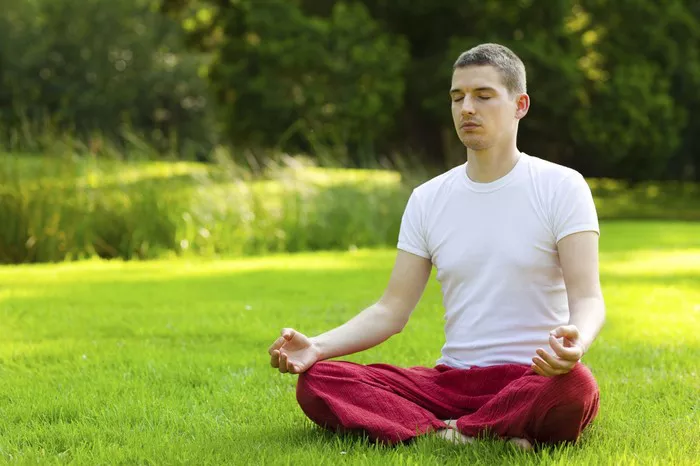Yoga is a centuries-old practice that originated in ancient India, blending physical postures, breathing techniques, and meditation to promote mental, physical, and spiritual well-being. It has become a popular form of exercise worldwide, attracting people of all ages and backgrounds. The term “yoga” itself means union or discipline, representing the connection between mind, body, and spirit. With its growing popularity, more people are turning to yoga for its various health benefits, but like any form of exercise or lifestyle practice, it also has its drawbacks. In this article, we will explore both the advantages and disadvantages of yoga, providing a comprehensive understanding of how it can impact individuals.
While many people experience significant benefits from yoga, it’s important to be aware of the potential challenges that may arise, especially for beginners or those with specific physical limitations. Understanding these advantages and disadvantages will help you decide if yoga is the right practice for you and how to approach it safely and effectively. Whether you’re looking to improve flexibility, relieve stress, or enhance overall health, yoga can be a transformative experience. However, it is essential to weigh the pros and cons to ensure that it aligns with your goals and lifestyle.
The Advantages of Yoga
Yoga offers numerous benefits for the body, mind, and spirit, making it a versatile and holistic practice. Whether you’re looking to increase your physical strength, reduce stress, or achieve emotional balance, yoga can provide meaningful improvements. Below, we will discuss some of the key advantages of incorporating yoga into your daily life.
Physical Health Benefits
One of the most immediate benefits of yoga is improved physical health. Many styles of yoga, from Hatha to Vinyasa, emphasize stretching and strengthening the muscles, which can lead to better flexibility, enhanced strength, and improved posture. The physical postures, known as asanas, are designed to open the body, release tension, and support alignment. For individuals who spend long hours sitting at a desk or suffer from poor posture, yoga can be especially helpful in addressing these issues.
Regular practice of yoga also promotes better cardiovascular health. Some forms of yoga, such as Vinyasa and Ashtanga, are more dynamic and increase heart rate, helping to improve circulation and boost heart health. Moreover, breathing exercises (pranayama) are often integrated into yoga sessions, which can enhance lung capacity and oxygenate the body more effectively. Yoga is also known for its ability to lower blood pressure and reduce the risk of chronic conditions such as heart disease, diabetes, and obesity.
Mental and Emotional Benefits
Yoga isn’t just beneficial for the body—it also has a profound impact on the mind and emotions. One of the main advantages of yoga is its ability to reduce stress and anxiety. The practice encourages mindfulness and self-awareness, allowing individuals to be present in the moment. Through the combination of slow, deliberate movement and controlled breathing, yoga activates the parasympathetic nervous system, which helps the body relax and reduce the production of stress hormones like cortisol.
The practice of meditation, often incorporated into yoga, can also help individuals cultivate emotional balance. By regularly practicing meditation, people can develop better focus, greater emotional resilience, and an enhanced sense of inner peace. Additionally, yoga has been shown to improve sleep quality by calming the mind and promoting relaxation. This makes it an excellent tool for people who suffer from insomnia or other sleep-related issues.
Improved Flexibility and Mobility
Yoga is widely known for its ability to improve flexibility. Regular practice allows muscles and joints to become more limber over time. This can significantly increase your range of motion, making everyday activities like bending, stretching, or lifting easier and less painful. Enhanced flexibility can also reduce the risk of injury, as your muscles and ligaments will be more adaptable to movement.
In addition to flexibility, yoga also improves joint mobility. The various asanas stretch and strengthen the muscles around the joints, providing better support and reducing the likelihood of joint stiffness. For people who suffer from chronic conditions like arthritis, yoga can be a gentle yet effective way to maintain or improve joint health.
Mind-Body Connection
Yoga places great emphasis on the connection between the mind and body. Through focused movement, breathing, and awareness, yoga practitioners learn to listen to their bodies and pay attention to the signals they receive. This mind-body connection can lead to greater self-awareness, helping individuals become more in tune with their physical and emotional states. It encourages a holistic approach to health, where mental well-being is just as important as physical fitness.
This practice of mindfulness often extends off the mat as well. Many people find that their yoga practice helps them make healthier lifestyle choices in other areas of life, such as diet, exercise, and stress management. As practitioners become more aware of their bodies, they are better able to identify and address unhealthy habits, leading to a more balanced and conscious life.
Spiritual Growth and Inner Peace
Yoga has roots in spiritual practices and can contribute to spiritual growth for those who seek it. While not all yoga practitioners are focused on spirituality, the practice’s emphasis on mindfulness, meditation, and self-reflection can lead to a deeper sense of inner peace and clarity. Some people turn to yoga as a way to explore their spiritual beliefs or to deepen their understanding of life’s purpose.
Through yoga, individuals often experience a heightened sense of connection to themselves and the world around them. This sense of unity can promote a greater sense of contentment, compassion, and gratitude. For those who approach yoga with a spiritual intention, it can serve as a path to self-discovery, helping them align their actions with their values and purpose.
See Also: Does Yoga Change Your Body?
The Disadvantages of Yoga
While yoga offers many advantages, there are also some drawbacks that should be considered, especially for beginners or individuals with specific health concerns. These disadvantages primarily revolve around the physical and mental demands of the practice, as well as the risk of injury if yoga is not practiced properly. It’s important to be aware of these potential challenges to ensure a safe and effective yoga practice.
Risk of Injury
Like any form of exercise, yoga carries the risk of injury, particularly if it is practiced incorrectly or without proper guidance. Common injuries in yoga include strains, sprains, and joint injuries, which can occur when practitioners push themselves too hard or attempt advanced poses before they have built sufficient strength and flexibility. It’s crucial to listen to your body and avoid overextending yourself, especially in more demanding poses.
Injuries can also occur if a yoga instructor provides inadequate or unclear instructions. It is important to practice yoga under the supervision of a qualified teacher, particularly when learning new poses. Additionally, some individuals with pre-existing injuries or conditions (such as back or knee problems) may find certain yoga poses uncomfortable or harmful if they are not modified to suit their needs.
Not Suitable for Everyone
While yoga is accessible to many people, it may not be suitable for everyone, especially those with specific physical limitations. For example, people with severe joint issues, fractures, or certain medical conditions may need to avoid certain poses or adjust their practice to avoid aggravating their health issues. Pregnant women, those with heart conditions, or individuals with mental health disorders should consult a healthcare provider before starting a yoga practice to ensure it’s safe for them.
Yoga may also be challenging for individuals who are not accustomed to physical activity or those who have limited mobility. Some forms of yoga, such as Ashtanga or Power Yoga, are more physically demanding and may be difficult for beginners or individuals who are not in good physical condition. In such cases, a gentler form of yoga, such as restorative or chair yoga, may be more appropriate.
Time and Commitment
Another potential downside of yoga is the time and commitment required for regular practice. To fully experience the benefits of yoga, consistency is key. For many individuals, setting aside time for yoga can be a challenge, especially with busy schedules. Some people may struggle to commit to a regular practice, and as a result, they may not see the desired results.
Additionally, yoga requires mental focus and discipline, which can be difficult for some individuals to maintain. The practice involves not just physical movement but also mindfulness, which may take time to develop. For those who are not accustomed to meditation or stillness, the mental component of yoga may feel uncomfortable at first.
Costs of Classes and Equipment
While many yoga classes are available for free online or through community resources, attending professional classes in person can be expensive. High-quality yoga studios often charge for individual classes or offer monthly membership fees, which may not be affordable for everyone. Additionally, yoga requires some basic equipment, such as a yoga mat, blocks, straps, and possibly other props, which can add to the cost for beginners.
For some people, these financial considerations may make it more difficult to commit to a consistent yoga practice. However, there are often affordable alternatives available, such as practicing at home with online videos or attending donation-based community classes. Finding an option that fits your budget can help mitigate this disadvantage.
Mental and Emotional Challenges
Although yoga is generally beneficial for mental health, some individuals may find the emotional aspects of the practice challenging. The emphasis on mindfulness and self-reflection can bring up deep-seated emotions or unresolved psychological issues. While this can be therapeutic for some, it can also be overwhelming for others who are not prepared to confront their emotions during practice.
Additionally, yoga’s focus on stillness and meditation may not resonate with everyone. People who are used to more fast-paced or high-intensity activities may find yoga too slow or boring. This mismatch of preferences can make it difficult for some individuals to fully embrace the practice.
Conclusion
Yoga is a powerful and transformative practice that offers a wide range of benefits, including improved physical health, mental clarity, and emotional balance. By fostering a strong connection between mind and body, yoga helps practitioners achieve a deeper sense of self-awareness and inner peace. However, it’s important to approach yoga with mindfulness and caution, as it is not without its risks and challenges. Understanding the potential disadvantages, such as the risk of injury or the mental challenges of mindfulness, can help you make an informed decision about whether yoga is the right practice for you. Whether you are new to yoga or have been practicing for years, it’s essential to listen to your body, choose the right style of yoga for your needs, and practice regularly to reap the full rewards of this ancient discipline.
You Might Be Interested In


















